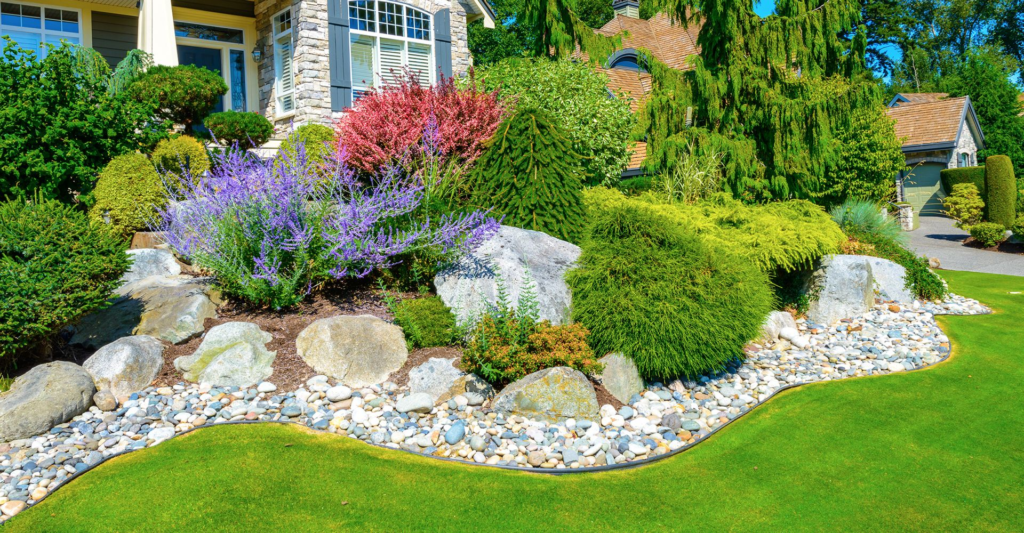A lush, green lawn is the envy of many homeowners, but maintaining that pristine carpet of grass can be a challenging endeavor. One common problem that plagues lawns, especially in warm and humid climates, is brown patch disease. This unsightly and damaging fungal disease can turn your once-vibrant lawn into a patchwork of brown and green. In this blog, we’ll explore the causes of brown patch and how proper lawn fertilization can help prevent and manage this issue.
Understanding Brown Patch
Brown patch, scientifically known as Rhizoctonia solani, is a fungal disease that primarily affects cool-season grasses like Kentucky bluegrass, tall fescue, and perennial ryegrass. It thrives in warm, humid conditions, making it a common problem in the late spring and early fall when the weather is favorable for its development. Brown patch gets its name from the characteristic circular patches of brown or tan grass it creates, often with a dark, water-soaked edge.
Causes of Brown Patch
Brown patch typically develops when the following conditions are present:
- Warm and Humid Weather: Brown patch is most active when temperatures range between 70-90°F (21-32°C), and humidity levels are high. These conditions create the perfect environment for the fungus to grow.
- Poor Air Circulation: Areas with limited air circulation, such as thickly overgrown grass or densely planted trees, are more prone to brown patch because moisture gets trapped and can’t evaporate easily.
- Excessive Nitrogen Fertilization: Over-fertilizing your lawn with nitrogen can encourage excessive growth, making the grass more susceptible to disease. This is where the role of proper fertilization comes into play.
The Role of Fertilization
Fertilization is a critical aspect of lawn care that can either prevent or exacerbate brown patch issues. Here’s how proper fertilization can help:
- Balanced Nutrient Levels: When you fertilize your lawn, you’re providing it with essential nutrients like nitrogen, phosphorus, and potassium. A balanced nutrient profile helps grass plants grow strong and healthy, making them more resistant to diseases like brown patch.
- Avoid Excessive Nitrogen: As mentioned earlier, overuse of nitrogen can lead to excessive growth, which creates favorable conditions for brown patch. To prevent this, choose a slow-release or controlled-release nitrogen fertilizer and apply it at the recommended rates.
- Timely Application: Applying fertilizers at the right time can make a significant difference. In the case of brown patch prevention, it’s best to apply fertilizer in the early spring and late summer or early fall. Avoid fertilizing during the peak brown patch season, which is typically in the hot, humid summer.
- Soil Testing: Regular soil testing helps you determine the specific nutrient needs of your lawn. This allows you to tailor your fertilization approach to provide the nutrients your grass requires, without overdoing it with nitrogen.
Preventing Brown Patch
In addition to proper fertilization, here are some other preventive measures to keep brown patch at bay:
- Mow Your Lawn Correctly: Maintain a regular mowing schedule, ensuring your grass is kept at the recommended height for its species. Taller grass shades the soil, reducing moisture retention, and promoting healthier growth.
- Improve Air Circulation: Trim back overhanging trees and thin out dense areas of grass to encourage air circulation. This reduces the likelihood of moisture being trapped in the grass.
- Water Wisely: Water your lawn early in the morning to allow the grass to dry before evening. Avoid frequent, shallow watering, as this can promote disease development.
- Use Disease-Resistant Grass Varieties: Consider overseeding your lawn with grass varieties that are resistant to brown patch.
Brown patch can be a frustrating problem for homeowners who take pride in their lawns, but with proper fertilization and a few other preventive measures, it can be managed and even prevented. Balancing nutrient levels, avoiding excessive nitrogen, and making sure your lawn is healthy and well-ventilated are key steps in the fight against brown patch. By implementing these strategies, you can enjoy a lush, green lawn throughout the year.

